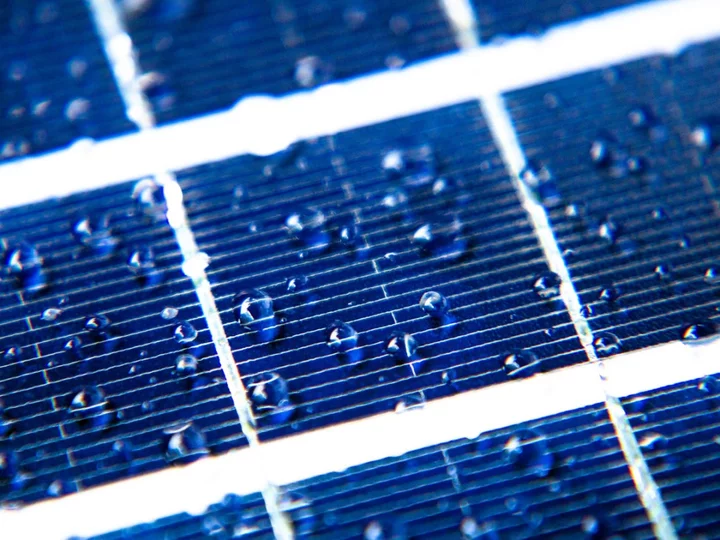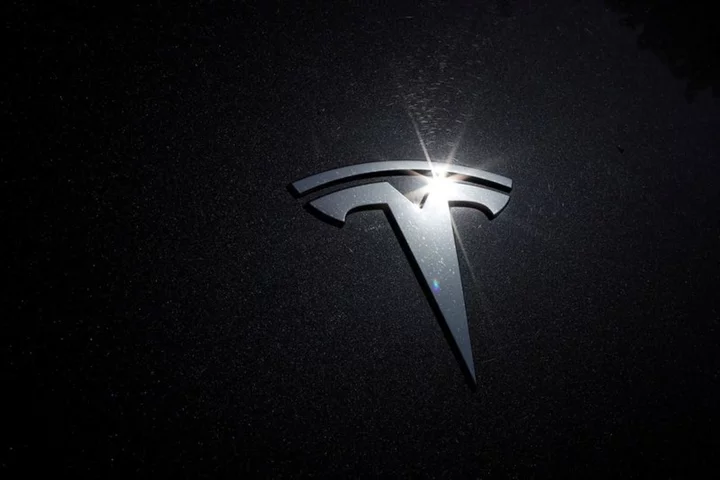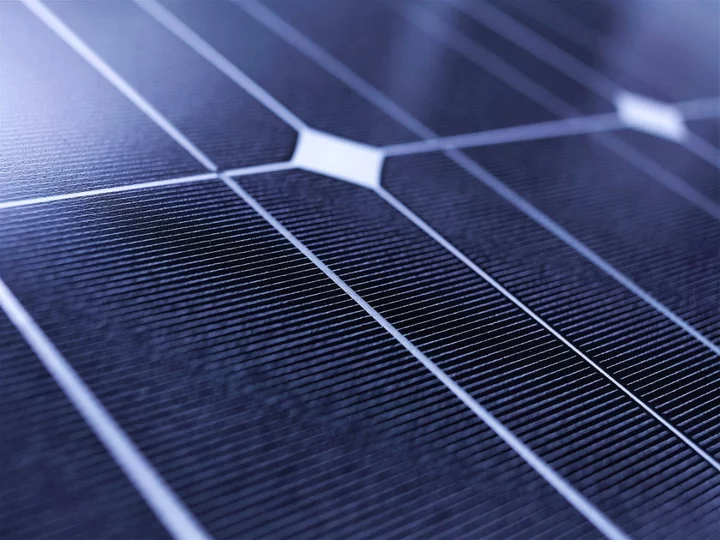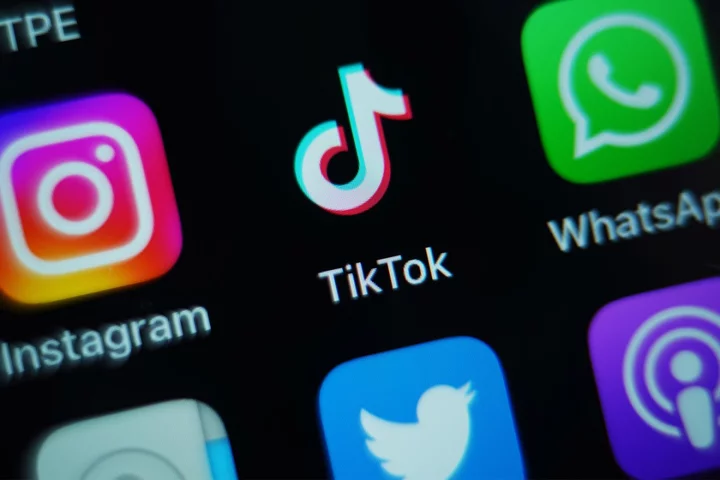
Geothermal breakthrough uses oil drilling tech to tap renewable energy
A Texas startup has made a major breakthrough towards achieving next-generation geothermal power after using oil drilling technology to tap the renewable energy source. Houston-based Fervo Energy successfully completed a trial of the system, which saw a drill plunge 2.3km (7,700 feet) into the Earth’s surface in order to pump water into them. Heated by high temperatures deep underground, the water was then pumped back to the surface where turbines converted the heat into electricity. The 30-day well test produced record-breaking power output for an enhanced geothermal system of 3.5 megawatts of electric production – enough to power more than 2,500 homes. “By applying drilling technology from the oil and gas industry, we have proven that we can produce 24/7 carbon-free energy resources in new geographies across the world,” said Tim Latimer, co-founder and chief executive of Fervo Energy. “The incredible results we share today are the product of many years of dedicated work and commitment from Fervo employees and industry partners.” One of these partners is Google, who signed an agreement in 2021 to develop the technology to provide carbon-free energy for its Cloud region in Las Vegas. Current geothermal energy production is mostly limited to locations near tectonic plates, such as Iceland, where magma close to the Earth’s surface is easier to reach. The latest feat marks a key milestone towards Fervo Energy’s plans to construct a 400MW project using its next-generation geothermal technology, which is expected to be online by 2028. “Power systems modelling confirms that geothermal can be a critical player in a fully decarbonised grid,” said Jesse Jenkins, an assistant professor and leader of the Zero-carbon Energy systems Research and Optimisation (ZERO) lab at Princeton University. “Fervo’s successful commercial pilot takes next-generation geothermal technology from the realm of models into the real world and starts us on a path to unlock geothermal’s full potential.” Read More Scientists invent double-sided solar panel that generates vastly more electricity ‘It is electrifyingly exciting’: How Britain could be freed from fossil fuels forever
2023-07-20 20:58

Solar panel tech breakthrough generates electricity from rain
Researchers have come up with a new way to generate electricity with solar panel technology by harvesting the energy produced by raindrops. The method, proposed by a team from Tsinghua University in China, involves a device called a triboelectric nanogenerator (TENG) that creates electrification from liquid-solid contact. These are typically used to harvest energy from waves, as droplet-based TENGs (D-TENGs) have previously faced technical limitations that prevented them from working at any significant scale. By using solar panel bridge arrays, the researchers discovered such barriers could be overcome “Referring to the design of solar panels in which multiple solar power generation units are connected in parallel to supply the load, we are proposing a simple and effective method for raindrop harvesting,” said Professor Zong Li, who led the research. “The peak power output of the bridge array generators is nearly five times higher than that of the conventional large-area raindrop energy harvesting. The results of this study will provide a feasible scheme for large-area raindrop energy harvesting.” A study detailing the breakthrough, titled ‘Rational TENG arrays as a panel for harvesting large-scale raindrop energy’, was published in the journal iEnergy. “As an important part of the natural energy and water cycle, rainfall contains abundant renewable energy,” the study notes. “However, this kind of renewable energy lacks effective utilisation today... Therefore, finding a reasonable topology to relieve the inherent constraints of D-TENGs is of great significance for realising the large-scale raindrop energy harvesting.” It is one of a number of promising advances with solar panel technology in recent months, with an Australian team of researchers developing self-healing cells capable of recovering 100 per cent of their original efficiency after suffering degradation from space radiation. Earlier this week, scientist’s at the US Department of Energy’s National Renewable Energy Laboratory (NREL) unveiled a design for a double-sided solar panel capable of boosting efficiency rates by up to 20 per cent by harvesting reflected sunlight. Read More Scientists invent double-sided solar panel that generates vastly more electricity How tech could turn our homes into renewable energy power stations Scientists invent double-sided solar panel that generates vastly more electricity Scientists invent self-healing solar panels with ‘miracle material’ ‘Miracle material’ smashes solar panel efficiency threshold
2023-07-20 20:54

Care home uses VR to help elderly residents 'unlock memories' and do things they never got to
A care home in Manchester has introduced VR as part of their activities roster for elderly residents, to help them 'unlock memories' and 'try' things they never got to. Downing House trialled the VR headsets on a one-off basis, and found it to be so successful (and bring residents so much joy) that they now offer it for an hour, once a month. "If you're getting a little bit older and you're a bit knackered, you can't climb Mount Kilimanjaro... but you can... with this", one resident, Bernard, joked in an interview with the BBC. Sign up to our new free Indy100 weekly newsletter
2023-07-20 19:48

Chinese automakers sold 75% of EVs in Southeast Asia in Q1 - study
By Devjyot Ghoshal BANGKOK Chinese automakers dominated Southeast Asia's fast-growing electric vehicle market, selling three out of every
2023-07-20 18:56

Musk hints at more Tesla price cuts, with autonomy still tricky
Elon Musk's elusive goal of creating self-driving software is driving the Tesla CEO to prioritize sales over profits,
2023-07-20 17:49

A cannibal solar storm will allow people in the UK to see the Northern Lights
The Northern Lights will be visible from the UK thanks to a large “cannibal” solar storm that is hitting the Earth. The aurora borealis (aka Northern Lights) are produced by when radiation from the Sun is deflected by the magnetic field of the Earth. Typically, the Northern Lights can be seen further north of the UK in the Nordic countries such as Iceland and Norway, as well as in northern parts of Canada. This is because when solar radiation hits the Earth, it is drawn to the Earth’s magnetic field, which runs north to south, and is directed towards to north and south poles. But, every now and then when there is a strong enough solar storm, they can also be seen further south in the UK because of the increased levels of solar radiation. From today (20 July), Brits stand a chance of catching a glimpse of the famous Nothern Lights once it turns dark. Sign up to our free Indy100 weekly newsletter Those in Scotland have the greatest chance of spotting the spectacle, however, they could also be viewed further south, but cloud cover and fewer hours of darkness mean it’s difficult to pinpoint cities with any great accuracy, says the Met Office. For the best chance to see the Northern Lights, experts recommend getting out of major cities. This is because, for the aurora borealis to be most visible, there must be minimal levels of light pollution which is not the case in built-up areas. The severity of the “cannibal” solar storm may be so strong that it disrupts radio signals and creates different weather patterns. Sean Elvidge, associate professor of space environment at the University of Birmingham, explained: “These storms manifest as major disturbances in Earth's magnetic field, potentially causing various space weather effects. “On one hand, they can result in radio blackouts, disrupting communication systems on our planet. On the other hand, these storms can produce awe-inspiring displays of natural beauty known as auroras.” Have your say in our news democracy. Click the upvote icon at the top of the page to help raise this article through the indy100 rankings.
2023-07-20 17:47

Republican appears to share image of Batman balloon claiming it's a UFO
A Republican Congresswoman has shared an image of what appears to be a Batman balloon, claiming that it is an unidentified flying object, ahead of a debate on UFOs in Washington next week. Anna Paulina Luna tweeted about the material she has gathered for the House Oversight UFO hearing, consisting of pictures of several alleged sightings. But a number of Twitter users questioned the credibility of one of the images that shows an object in the air shaped like Batman’s face, leading to speculation that officials have confused a party balloon for a UFO. Sign up to our free Indy100 weekly newsletter “The military ‘leaked’ a photo of a Batman party balloon and claimed it was a UFO. That seriously made me doubt their ability to analyze anything,” said one person. Another said: “My father was a pilot for 20 years, they make mistakes all the time. I just showed you a picture of when a fighter pilot confused a Batman party balloon for a UFO that had no signs of propulsion.” But, one user who believes it is a UFO, said: “I think there is a massive difference between a hot air balloon and a Batman balloon you buy at Dollar Tree for $4.99 and I am pretty sure you know that! Pilots are not mistaking a Batman balloon as a UFO & the balloon ain’t making it to 25-30 thousand feet” “The pic with a blue background near the center is definitely a UFO and not just a party balloon,” argued another. The debate around UFOs is gaining pace in the US. The House Oversight Committee will hold a hearing on the issue next week after Republican congressmen and women promised to look deeper into the issue. It comes after unconfirmed claims from a former intelligence official that the US military had found crashed alien spacecraft. The Pentagon has said it hasn't discovered any information to substantiate this claim. House Speaker Kevin McCarthy was asked on Monday if he believes in aliens, in light of the hearing. "I will continue to see," McCarthy said. "But I think if we had found a UFO, I think the Department of Defense would tell us because they would probably want to request more money." "I'd love to see whatever facts and information we have," McCarthy added. "I'm very supportive of letting the American people see what we have, where we go." Have your say in our news democracy. Click the upvote icon at the top of the page to help raise this article through the indy100 rankings.
2023-07-20 17:46

Scientists invent double-sided solar panel that generates vastly more electricity
Researchers have invented a double-sided solar panel capable of generating electricity from the Sun’s energy on both sides. The bifacial solar cell, developed at the US Department of Energy’s National Renewable Energy Laboratory (NREL), harvests reflected sunlight hitting the back of the device, offering an unconventional route to producing higher energy yields for less space and cost. Typical advances to solar cell efficiency rates centre on iterative improvements to the side facing the Sun. This new approach could boost the energy harvesting capabilities of solar panels beyond their theoretical limit. “This perovskite cell can operate very effectively from either side,” said Kai Zhu, a scientist at the Chemistry and Nanoscience Center at NREL who led the research. Current solar cell technologies, which use silicon as the semiconductor material, have an efficiency rate of around 26 per cent – higher than the 23 per cent achieved in lab tests by the front side of the new panel. The back side of the panel, however, achieves an efficiency of about 91-93 per cent of the front, which offers up to 20 per cent more power overall when harvesting reflected sunlight. Perovskite has become a key driver of solar cell advancements in recent years, breaking new efficiency records and providing new pathways to creating next-generation technologies. Earlier this week, researchers unveiled perovskite-based solar cells capable of healing themselves when damaged by radiation in low-Earth orbit. Tandem silicon-perovskite solar cells have achieved lab-measured efficiency of more than 30 per cent, and have a theoretical limit far higher than purely silicon cells. Rapid progress with their development has seen two separate startups announce commercial production of the next-generation panels. Producing the bifacial solar panels would cost more than monofacial modules, however their capacity to produce more power could make them more economically viable over time. The latest research was detailed in a study, titled ‘Highly efficient bifacial single-junction perovskite solar cells’, published in the journal Joule. Read More Scientists invent self-healing solar panels with ‘miracle material’ How tech could turn our homes into renewable energy power stations
2023-07-20 16:26

TikTok is now most favourable single source of news in teenagers in the UK, research shows
TikTok is now the most used single source of news across all platforms for teenagers in the UK, new research from Ofcom has found. The regulator’s News Consumption In The UK 2022/23 report found TikTok is the favoured single news source among 12 to 15-year-olds. TikTok is most popular with young people and used by 28 per cent of teenagers, followed by YouTube and Instagram, both at 25 per cent, according to the figures. But, taking into account all news content across its platforms, the BBC still has the highest reach of any news organisation among this age group – used by 39 per cent of teenagers. Over the last 12 months we've seen most major publishers refocus their strategy, partly as otherwise there's more risk of young people seeing unreliable news Nic Newman, Reuters Institute for the Study of Journalism It comes after the UK Government banned ministers from using TikTok, which is a Chinese-owned video-sharing app, on their work phones following a security review. The House of Commons and the Lords also cited security concerns as they decided to ban the app across the Palace of Westminster. TikTok, owned by Chinese internet company ByteDance, argues it does not share data with China. However, Beijing’s intelligence legislation requires firms to help the Communist Party when requested. Nic Newman, senior research associate at the Reuters Institute for the Study of Journalism, said there is a big shift taking place in terms of how people consume news and that more publishers have been joining TikTok. He said: “TikTok, Snapchat, Instagram, the people younger people are listening to tend to be influencers, personalities, they film for a range of reasons – in some instances you have specific news creators, in other cases it’s just personalities, comedians, talking about issues including free school meals. “In terms of the implications for the industry, one of the things we’ve really seen in the last 12 months is we have publishers who are very reluctant to go into TikTok, but over the last 12 months we’ve seen most major publishers refocus their strategy, partly as otherwise there’s more risk of young people seeing unreliable news. “That’s more challenging as there’s no business model for TikTok, so it’s very hard. “It’s just starting to build relationships with young people. “There’s been surveys that show TikTok is amongst the least trusted platforms, partly as it’s one of the newest.” He added: “During the war in Ukraine we saw young people going to traditional news brands – but not for very long, it depends what the subject is to some extent. “Covid was a big change because people were at home and people were talking about Covid on TikTok and people had a bit of time. “That’s a case of very serious news being carried on TikTok. “Passions and celebrity news, that’s a big part of what’s going on with the younger people, but there’s also serious news, that’s the wider big shift.” When considering perceptions of trust, teenagers rated traditional sources better than their online counterparts, as BBC One/Two was trusted by 82 per cent of its teenage users, compared to TikTok at 32 per cent, Instagram at 38 per cent, Facebook at 41 per cent and Snapchat at 31 per cent. Twitter was the exception, with a 50 per cent rating on trust, Ofcom found. The news topics of most interest to younger teens generally are “sports or sports personalities” (23per cent), “music news or singers” (15 per cent), “celebrities or famous people” (11 per cent), “serious things going on in the UK” (8 per cent) and news about “animals or the environment” (9). Meanwhile, those aged 16-24 are much less likely than the average adult to access news from traditional media sources, such as TV (47 per cent vs 70 per cent), radio (25 per cent vs 40 per cent) and print newspapers (16 per cent vs 26 per cent). Social media platforms dominate the top five most popular news sources among 16-24s. Instagram is the most-used single news source at 44 per cent, followed by Facebook at 33 per cent, Twitter at 31 per cent, and TikTok at 29 per cent. Coming in joint second, BBC One at 33 per cent is the only traditional media source to feature in the top five. But Ofcom said its figures show broadcast TV news maintains its position as the most popular source among adults in the UK, used by 70 per cent, which rises to 75 per cent when broadcast video on-demand news content is included. BBC One remains the most-used news single source across all platforms at 49 per cent, followed by ITV at 34 per cent – although both channels have seen gradual declines over the past five years as they are down from 62 per cent and 41 per cent respectively. Similarly, Facebook – the third most popular news source among adults – is showing signs of decline, from 33 per cent to 30 per cent over the same period. TikTok’s popularity as a source of news for adults is growing, with one in 10 adults saying they use it to keep up with the latest stories – overtaking BBC Radio 1 and Channel 5, both at 8 per cent for the first time. TikTok, at 55 per cent, along with Instagram, at 53 per cent, is particularly popular among adults for celebrity news. Twitter is the favoured destination for breaking news, with 61 per cent of adults choosing it, and political news, at 45 per cent, while Facebook is the preferred source for local news, at 59 per cent. Among users of the platforms, news sourced via social media is rated lower for trust, accuracy and impartiality than the more traditional sources of news, but is rated moderately well on “offers a range of opinions”, “helps me understand what’s going on in the world today” and being “important to me personally”. One in ten (10 per cent) 16-24s claims to consume no news – twice the figure for all adults. After a long-term decline in the use of print newspapers – with overall reach of these news brands being supplemented by their digital platforms – Ofcom’s most recent data shows print newspaper reach was consistent between 2022 and 2023. Just over a quarter of adults (26 per cent) accessed news via print newspapers, increasing to 39 per cent when including their online platforms. The Daily Mail/Mail on Sunday and The Guardian/Observer were the most widely-read print and digital news titles overall. Read More Charity boss speaks out over ‘traumatic’ encounter with royal aide Ukraine war’s heaviest fight rages in east - follow live Talk of AI dangers has ‘run ahead of the technology’, says Nick Clegg Eurostar passengers can avoid UK passport checks by having faces scanned ‘Hostile states using organised crime gangs as proxies in the UK’
2023-07-20 12:16

Congressional panel probes US firms' investments in China
WASHINGTON A U.S. House of Representatives committee has launched an investigation into investments by four U.S. venture capital
2023-07-20 07:23

China's Washington envoy warns of retaliation against further US tech curbs
By David Brunnstrom WASHINGTON China does not want a trade or tech war but will definitely respond if
2023-07-20 06:58

IBM Maintains Full-Year Sales Forecast, Easing Fears of Slowdown
International Business Machines Corp. maintained its full-year forecast of 3% to 5% sales growth, overcoming investor anxiety about
2023-07-20 04:23
